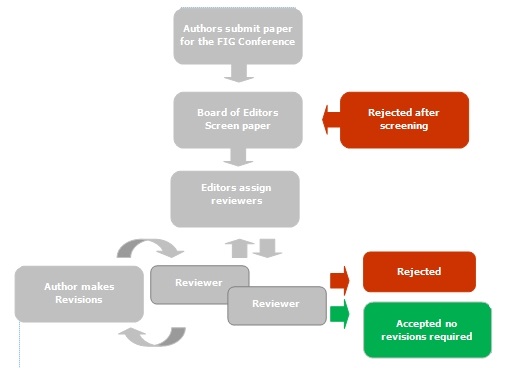FIG Peer Review Journal

|
FIG Peer Review Process
Peer review is a process whereby papers are reviewed by
designated subject-matter experts. The aim of the peer review is to
- proof, assure and improve the quality of the paper
- offer to the authors the possibility of an external check for
their professional work
- offer academic proof for a scientific publication
Peer review is the system used to assess the quality of
scientific research before it is published. Independent researchers in the
same field scrutinise research papers for validity, significance and
originality to help editors assess whether research papers should be
published in their journal.
Questions the reviewer ask -
- Does the paper fit the standards and scope of the conference it is being
considered for?
- Is the research question clear? Was the approach appropriate?
- Are the study design, methods and analysis appropriate to the question
being studied?
- Is the study innovative or original?
- Does the study challenge existing paradigms or add to existing knowledge?
- Does it develop novel concepts?
- Does it matter?
- Are the methods described clearly enough for other researchers to
replicate?
- Are the methods of statistical analysis and level of significance
appropriate?
- Could presentation of the results be improved and do they answer the
question?
- Are the conclusions appropriate?
The process
This review is “double-blinded”, which means that the reviewers do not know who the authors are, and the authors do not
know who the reviewers are. This reduces possible bias resulting from knowing who the authors are or
where they
come from, work assessed on its own merits.
Process diagram:

|

